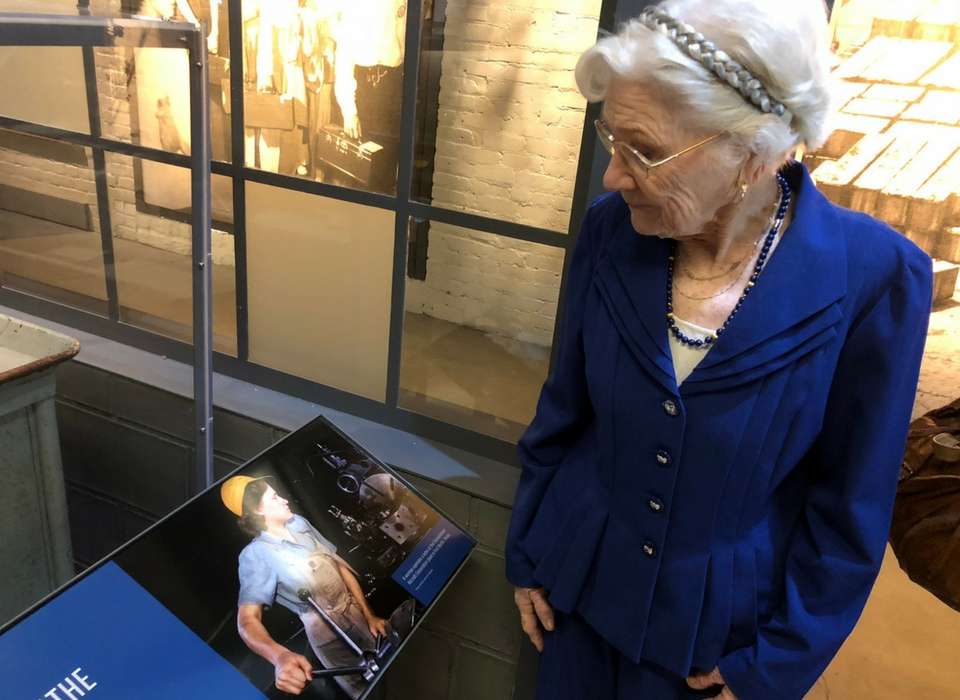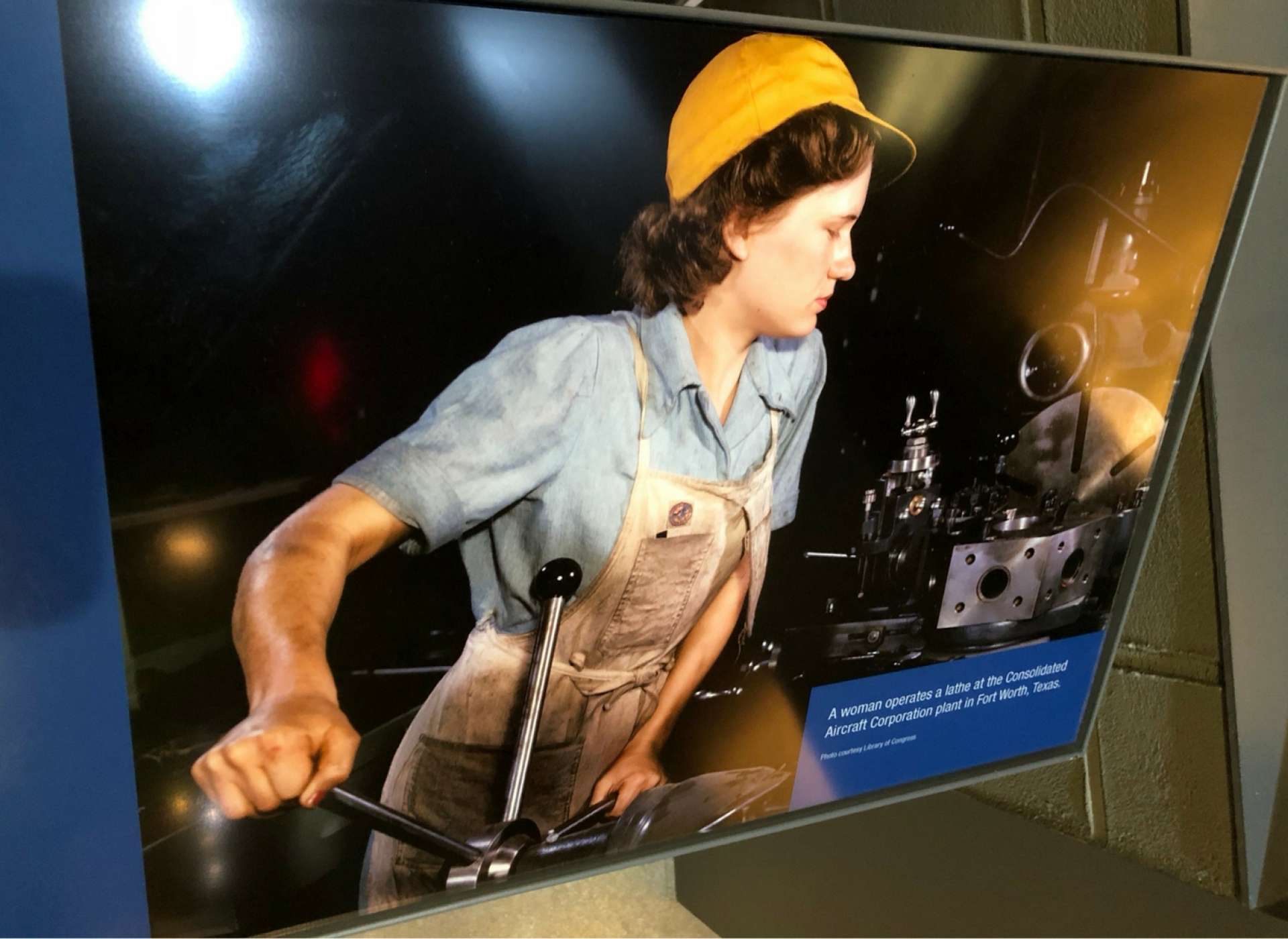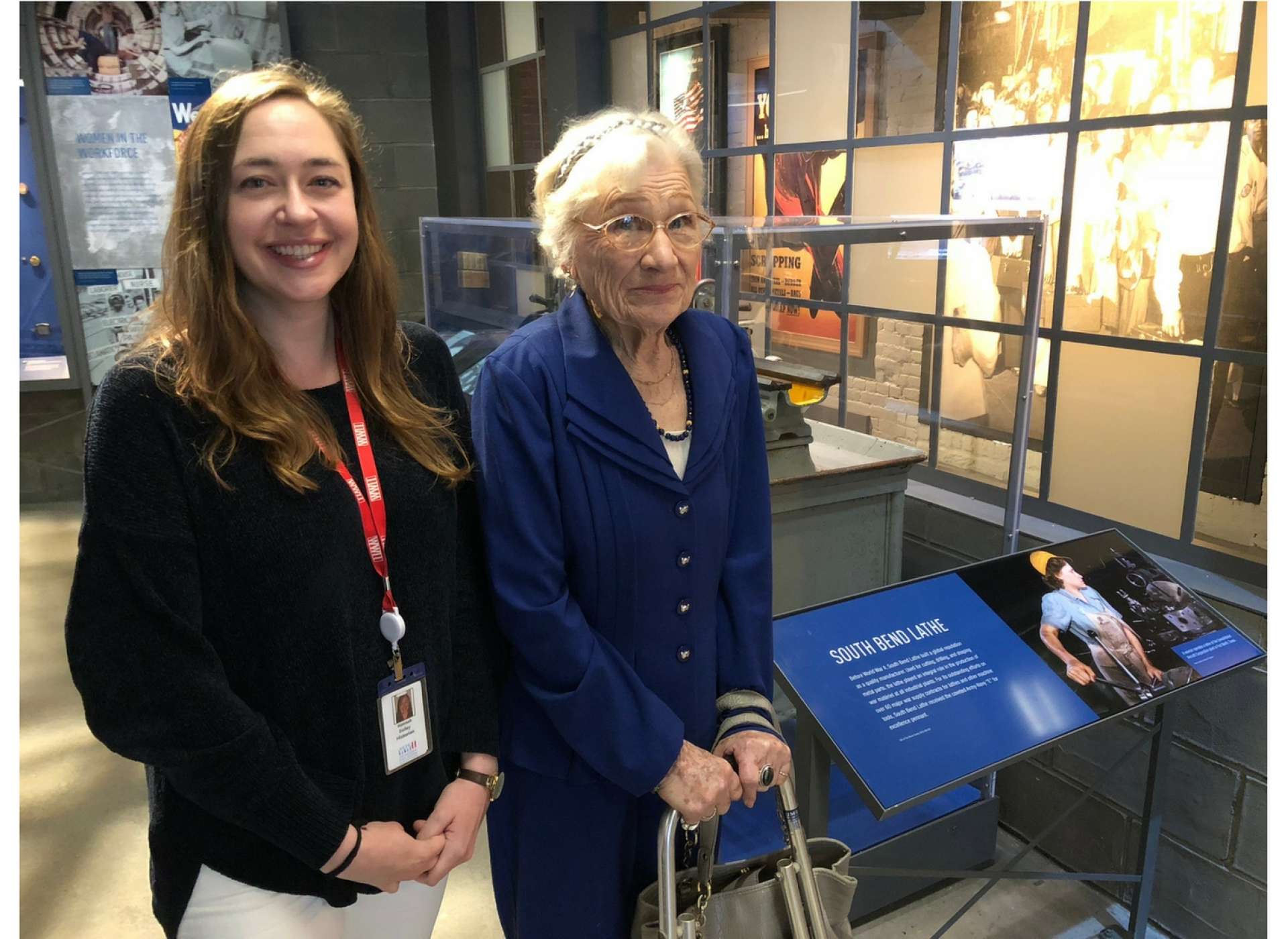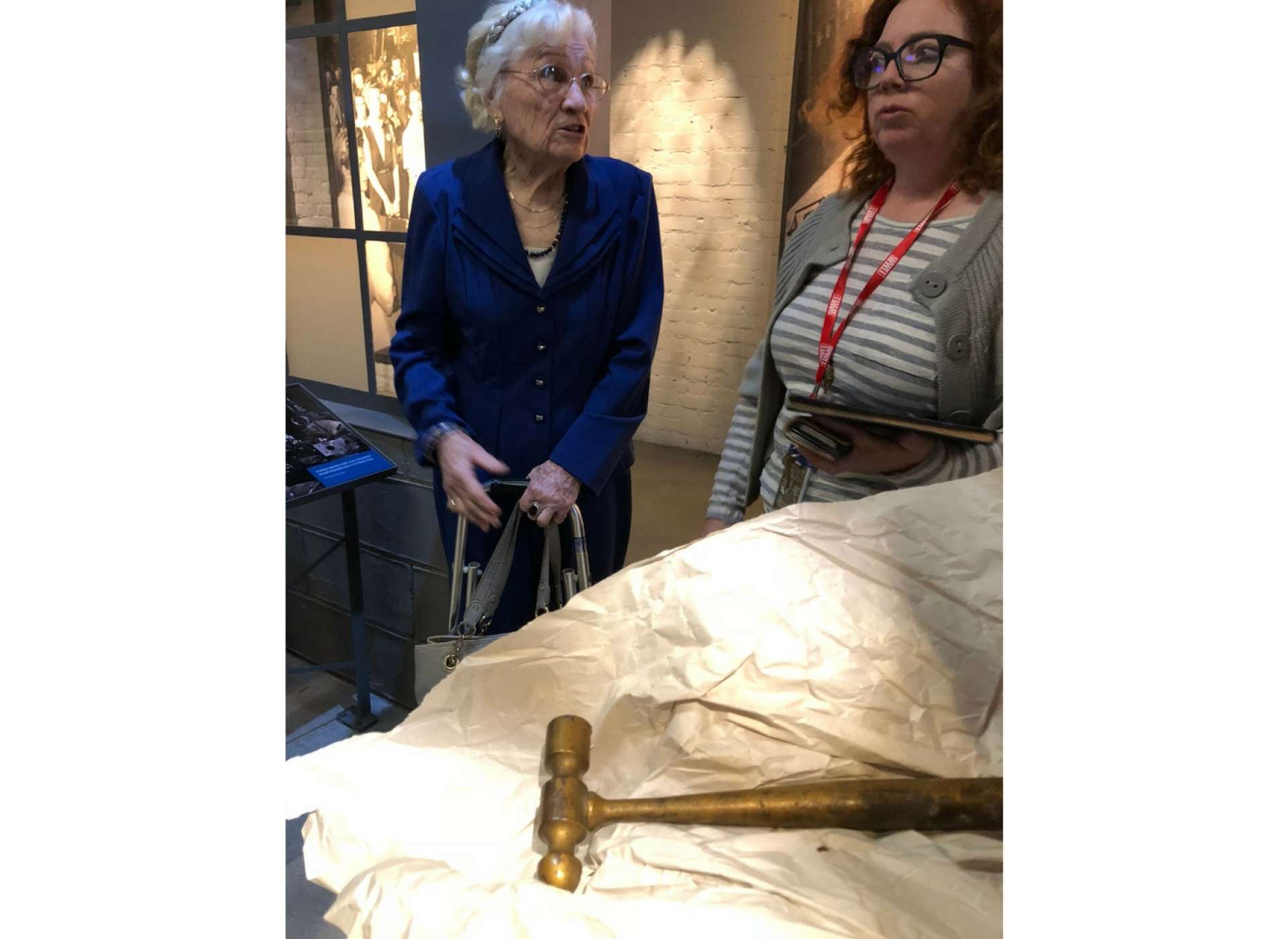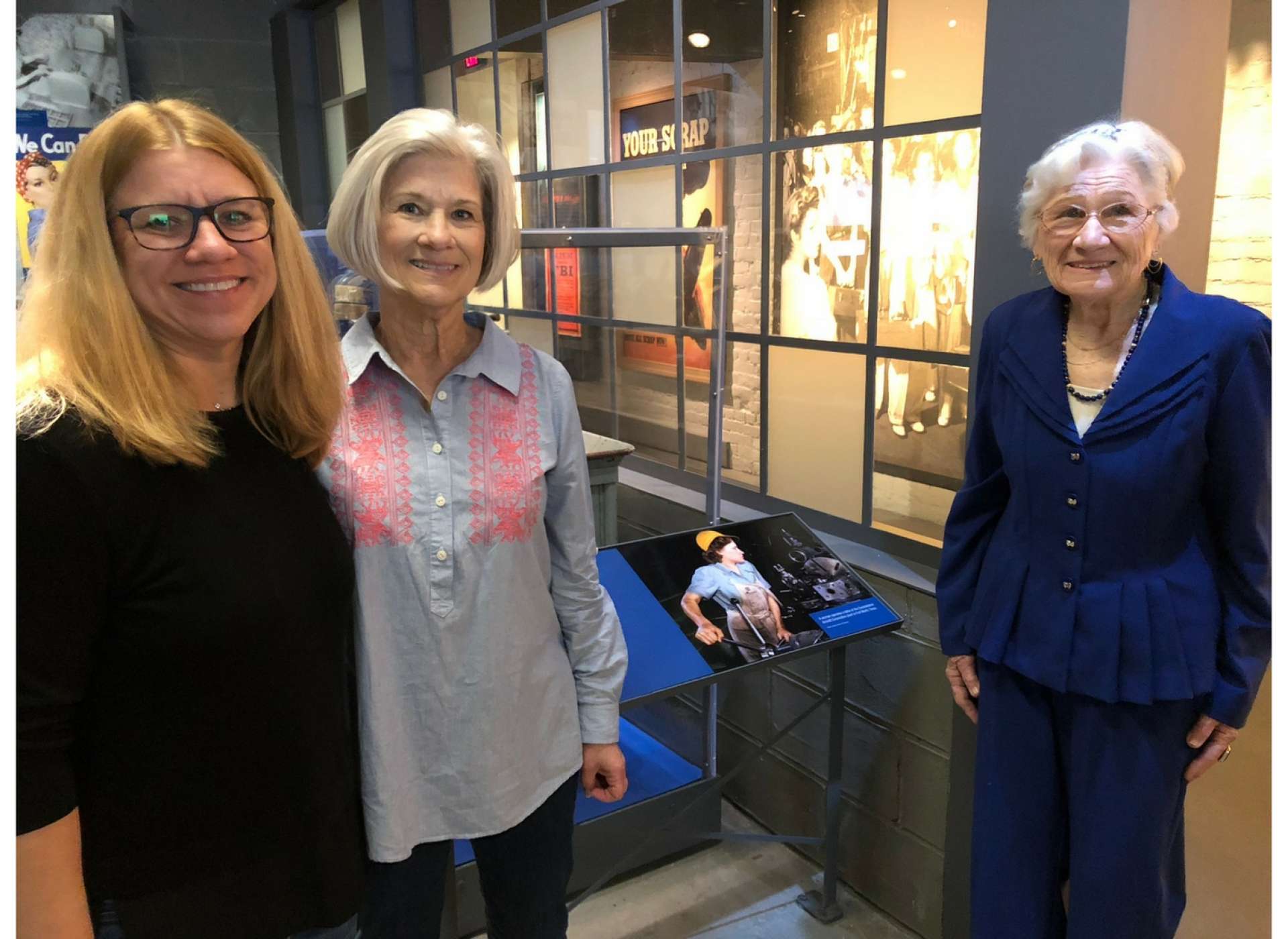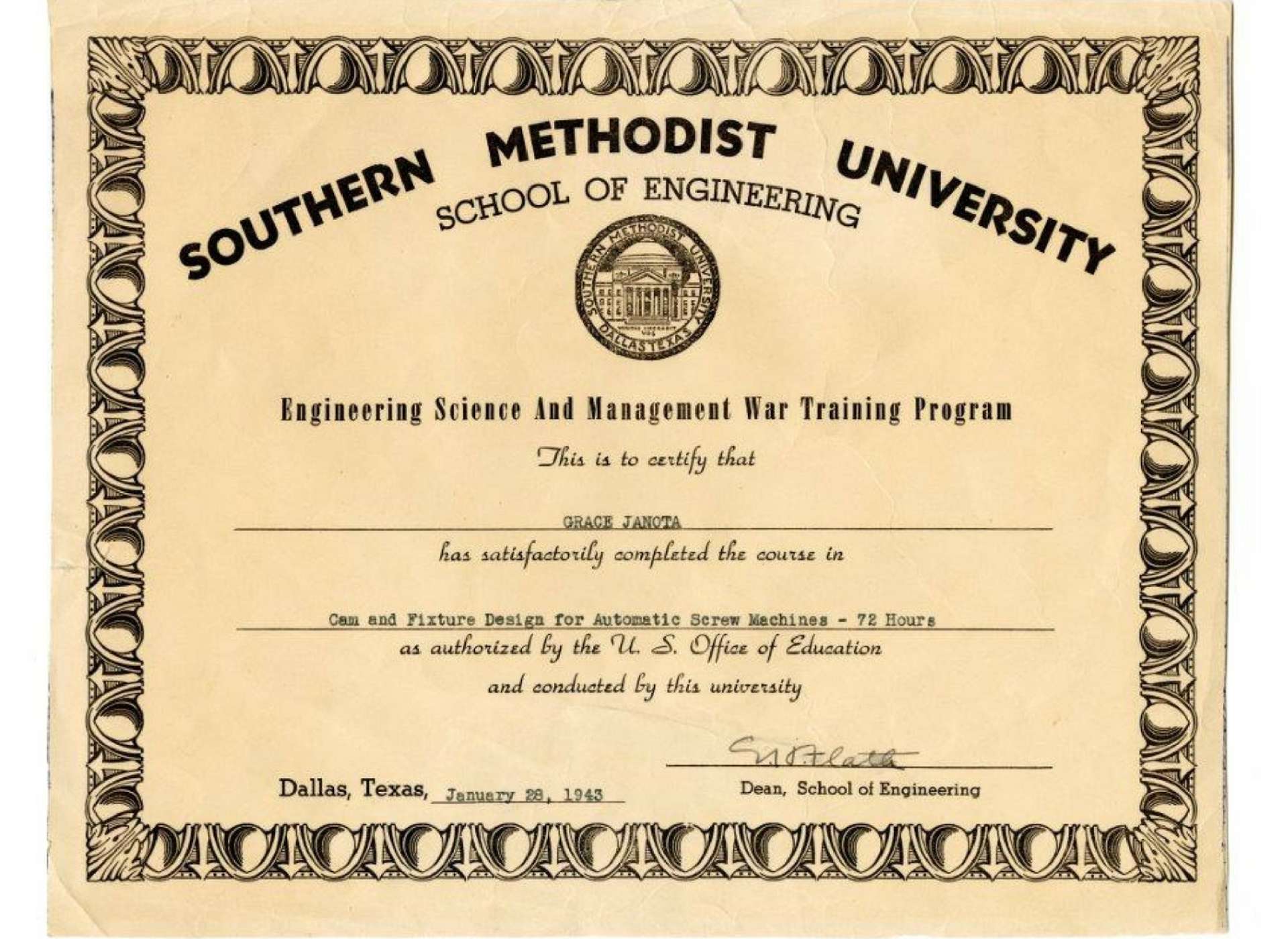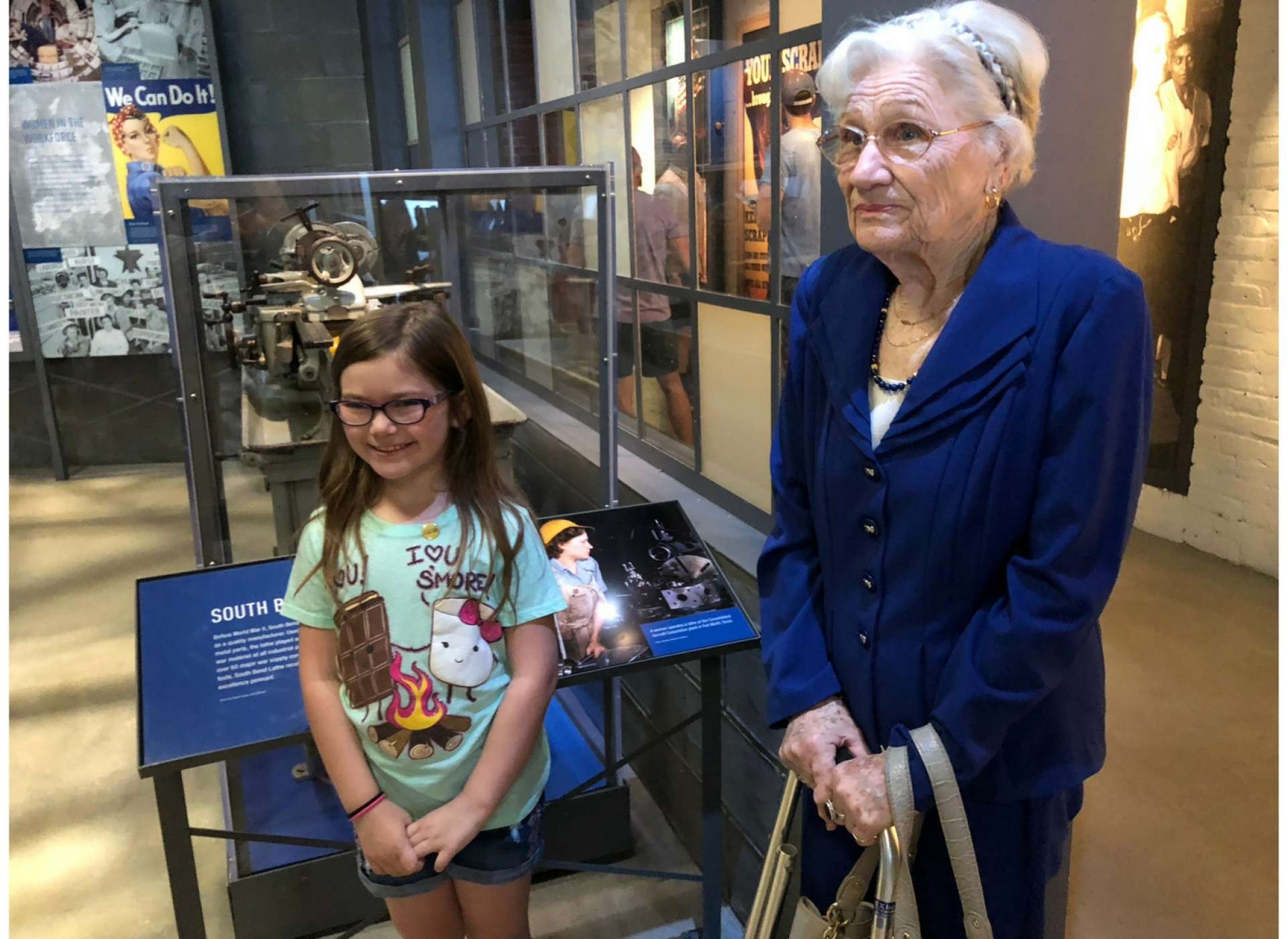Grace Janota was one of several women photographed that day at the Consolidated Aircraft plant in Fort Worth. In the vivid color image, Grace is working at a lathe making parts for bomber engines. World War II was on, and women like Grace Janota—many working outside the home for the first time in their lives—were heroines on the Home Front arming the Arsenal of Democracy.
Grace had been working at the University of Texas Tea Room at the time of the Japanese attack on Pearl Harbor. Suddenly out of a job (the Tea Room was drafted for use as a Navy mess hall) and yearning to contribute to the war effort, Grace decided to become a machinist. Joining a team of women for National Youth Administration training in Waco, Texas, she graduated after passing a written exam and went to work for Consolidated Aircraft from 1942 to 1945.
Like many women who joined the workforce during the war and despite taking on additional training (see photo below of her war-training certification), Grace was displaced after the fight was won. She returned home to live with her parents and was happy to not have a job that required removing grease from her hands and arms at the end of every workday. She met and married a returning soldier and worked as a bank teller for 35 years.
Now age 96 and a resident of Mesquite, Texas, Grace (Janota) Brown recently visited the Museum, where the photo of her working at the lathe is in the Manufacturing Victory gallery of the permanent exhibit The Arsenal of Democracy: The Herman and George R. Brown Salute to the Home Front. The photo is near the gallery exit, next to a South Bend Lathe and overseen by J. Howard Miller’s iconic “We Can Do It!” Rosie the Riveter poster.
During her visit, Grace was interviewed by Historian Hannah Dailey for the Museum’s oral history collection, and met with Assistant Director for Curatorial Services Kim Guise, to whom Grace presented a hammer she’d manufactured to add to the Museum’s collection of wartime artifacts.
After the oral history interview, Grace, Kim, Hannah, and Grace’s family members gathered in the gallery near the photo of Grace at the lathe.
“A crowd developed around us to hear Grace tell stories of her wartime life,” Guise said. “A small line even formed of people wanting to take their picture with the exhibit's star. It's not often you get to talk with an exhibit come to life. These opportunities are increasingly rare and are truly cherished.”
-

Grace Janota's wartime photo in the Manufacturing Victory gallery of the The Arsenal of Democracy: The Herman and George R. Brown Salute to the Home Front.
-

With Historian Hannah Dailey.
-

With Assistant Director for Curatorial Services Kim Guise.
-

Grace (Janota) Brown with granddaughter Janis Frazer and daughter Marilyn Frazer.
-

Grace Janota's war-training certificate.
-

A young visitor poses with a Museum exhibit come to life.
